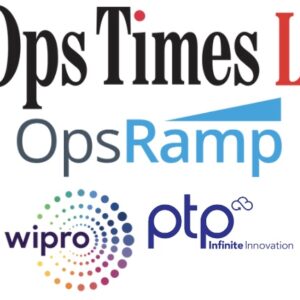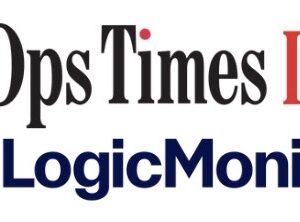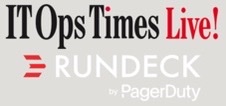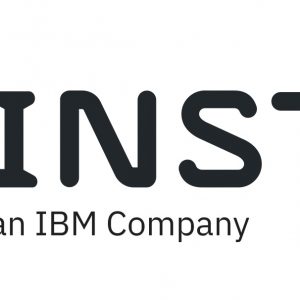Webinars
Time to Modernize Your IT Operations: What Got You Here, Won’t Get You There.
AVAILABLE NOW
Digital transformation has made it imperative for IT leaders to find effective ways to modernize their legacy systems and service delivery. Moving beyond legacy, patchwork point tools and leveraging a modern, unified IT management platform will decrease the cost and complexity of trying to retrofit old tools to meet new needs. It will also reduce your risks, increase efficiencies, and ultimately improve the quality of service you deliver to your customers.
Join us for a lively and insightful discussion with panelists from Wipro, PTP, and OpsRamp. Hear firsthand how companies have successfully moved from legacy ITOM systems to a single, unified, and modern SaaS-based IT management platform and the benefits they are realizing as a result, including:
- 90-95% reduction in alert noise and false alarms driven by AIOps
- 70% expansion in customers with minimal increase in infrastructure and required resources
- 40-80% reduction in time spent to find and fix issues
- 30% increase in overall customer satisfaction

Webinars
The Power of Observability and AIOps: Busting Myths and Sharing Realities
AVAILABLE NOW
Observability and AIOps are most likely something you have heard about. But would you know how to differentiate them, explain the pros and cons of each, how they fit together (or not), understand the key benefits and challenges, and detect hype about what these can achieve when you see it?
The global market has witnessed rapid news about observability and AIOps and there is increasing demand for the adoption of each. For now: when it comes to Observability, it is more of an attribute than a process and AIOps is more the usage of Artificial Intelligence within IT operations or beyond.
This informal but structured exchange between Bill Talbot, CMO, OpsRamp and Eveline Oehrlich, Industry Analyst, Research In Action, elaborates on both Observability and AIOps.

Webinars
How to evolve your monitoring – a blueprint for success
AVAILABLE NOW
Watch this webinar with LogicMonitor’s experienced site reliability engineers who share tips and tricks learned during their own evolution and how to apply that into a foolproof strategy, so you too can modernize your monitoring into the cloud.

Webinars
Safely Delegate your Cloud Operations with Self-Service Automation
AVAILABLE NOW
Running Operations is not an easy job, especially these days. Ops teams have to ensure excellent user experiences, resolve incidents quickly and help developers stay productive. Yet at the same time, there is also the need to maintain systems security and keep downtime to a minimum.
While advances in cloud computing have helped address some of these challenges, many organizations find it difficult to leverage the cloud at scale because of bottlenecks that form around repetitive tasks, such as developers having to wait for provisioning infrastructure. Despite having access to abundant cloud resources, these speed-bumps often make it difficult to achieve team objectives.
Watch this talk on-demand today and learn:
-
How to safely delegate the management of your cloud deployment (to developers and other end users) with self-service operations.
-
How to create powerful runbooks with guardrails that leverage existing scripting languages, infrastructure, and tools to remove bottlenecks that form around repetitive tasks.
-
Strategies for getting started with self-service.

Webinars
Accelerate the Adoption of “You Build it, You Own it” with Self-Service Operations
AVAILABLE NOW
Many engineering and operations teams would like to move to a Service Ownership: “You build it, you own it” operating model. However, as with many ancillary objectives driving DevOps across an organization, this is easier said than done. Often, it’s because teams lack the human-to-technology mechanisms which allow for a culture of service ownership.
Within the context of incident response, teams need the ability to clearly define who is responsible for tending to issues, how they’re notified, and who to lean on for help. This is true for non-incident response scenarios, too. How can teams operate at a fast pace, and a large scale, while still maintaining valid and safe service ownership? One of the keys to allowing for service ownership outside of incident response is by imbuing an organization with a culture of self-service operations.
This is where a service owner builds and delegates self-service mechanisms for end-users (non-service owners) to make use of a given service safer while also reducing the number of interruptions to the service creator/owner.
In this webinar, you’ll learn:
- How self-service helps organizations adopt a ‘You Build it, You Own it’ model
- Necessary mechanisms for service owners to create self-service interfaces which address the needs of their service-users
- How to apply self-service while continuing to maintain security and compliance standards
- How to allow developers and SREs to safely delegate automation as self-service requests to other teams and IT users
- How to help developers regain productivity and quality of life by doing what they do best: coding
Watch the webinar today!

Webinars
Enterprise Observability: Behind the Term
June 29, 2021, 1PM ET | 10AM PT
With the increasing complexity of modern cloud-native applications, enterprise observability is critical to delivering high-quality services. In this webinar we will look behind the term to talk about what enterprise observability brings to operations and DevOps teams.
Attendees also will learn about vital components of Instana’s Enterprise Observability Platform, and more importantly, how those components can help them observe their environments.
In this webinar, we will discuss what makes Enterprise Observability different, including components in three different buckets:
-
Automation
- Context
-
Intelligent action

White Papers
The Speed of Change: How Fast Are You?
How fast is your IT? You need speed and adaptability to adjust as big changes in the global economy and our daily lives keep coming. Disruption is the status quo, and the “new normal” is not yet defined.
Are you prepared for what’s next? What are IT organizations saying about it all?
This spring, 2,200 IT professionals and senior IT leaders participated in a survey and shared:
- How fast their organizations can respond to change
- What application development challenges are holding them back
- What makes them more (or less!) ready for change
The most shocking result? Only 21% of people feel like they can beat their peers and competitors at the change game.
These and other answers to the survey became a report that offers insights into which organizations are leading the race in speed and adaptability in this era of digital urgency.
Download “The Speed of Change: How Fast Are You?” to learn more about those who lead and those who don’t. You’ll also find out if you are a leader, and get tips on what to do if you are not.
White Papers
Establish an incident management process like an IT Operations Pro
Incident Management is an IT service management process intended to restore “normal” service operation as quickly as possible, while minimizing any adverse impact on business operations or the end user. To be successful, IT teams must promptly and effectively deal with all Incidents reported by users.
So why is Incident Management important? The answer is impact. The cost of downtime can add up to billions of dollars of lost revenue, cost employees productivity time and leave a negative user experience. For every hour of downtime a business experiences there is a profound impact to the business.
Having a well-defined incident management process can help reduce the cost of downtime dramatically.
White Papers
2020 State of Incident Management Report
See how over 500 organizations run their incident management process.
Each company has its own version of an incident management process, and some are clearly better than others. Learn how world-class IT Operations and DevOps teams resolve incidents and see how your own internal process compares.
White Papers
The Gorilla Guide to Why Modern IT Requires Modern Disaster Recovery
Protecting your data center is your top priority. But, you’re continually faced with the rise of new external threats. That means you need new tools to respond effectively and quickly.
Read the Gorilla Guide to Why Modern IT Requires Modern Disaster Recovery, to see how you can improve your backup and disaster recovery strategy. We review the types of threats and attacks companies face, and the best ways to back up and restore critical systems and data to ensure maximum uptime and avoid paying a ransom.
Key takeaways include:
- Who is threatening your data center security
- How modern disaster recovery solutions protect your data and give you clear, concise steps to recover from a ransomware attack
- What to expect in the evolution of DR, and how to continue to leverage the public cloud, data management, and SaaS
Download the guide to learn more!
White Papers
The Complete Ransomware Recovery Guide
Using best practices for ransomware prevention, network intrusion, encryption, and anti-phishing tools, plus keeping all endpoints up to date with the latest security patches will put you in a good position to recover your data without paying a ransom.
Download this guide to learn:
- Proactive ransomware prevention
- What to do when your systems are infected
- How to recover from a ransomware attack
Download the guide to learn more!
White Papers
Observability: A Guide for Buyers
You’ve likely heard the term observability being passed around for the past few years, and you might have assumed that it is just another marketing buzzword for monitoring. And you wouldn’t be alone in that thinking.
Some experts would say that “observability”, “AIOPs” and “application Performance Monitoring (APM)” are just terms used to distinguish between products on the market.
But others would argue that there’s a concrete difference between all of these terms.
Download this guide today to learn:
* Differences in these terms you’ll want to know
* How observability makes reactive operation teams proactive
* Gartner’s 3 requirements for APM
* A guide to monitoring tools
Download this guide to learn more.



